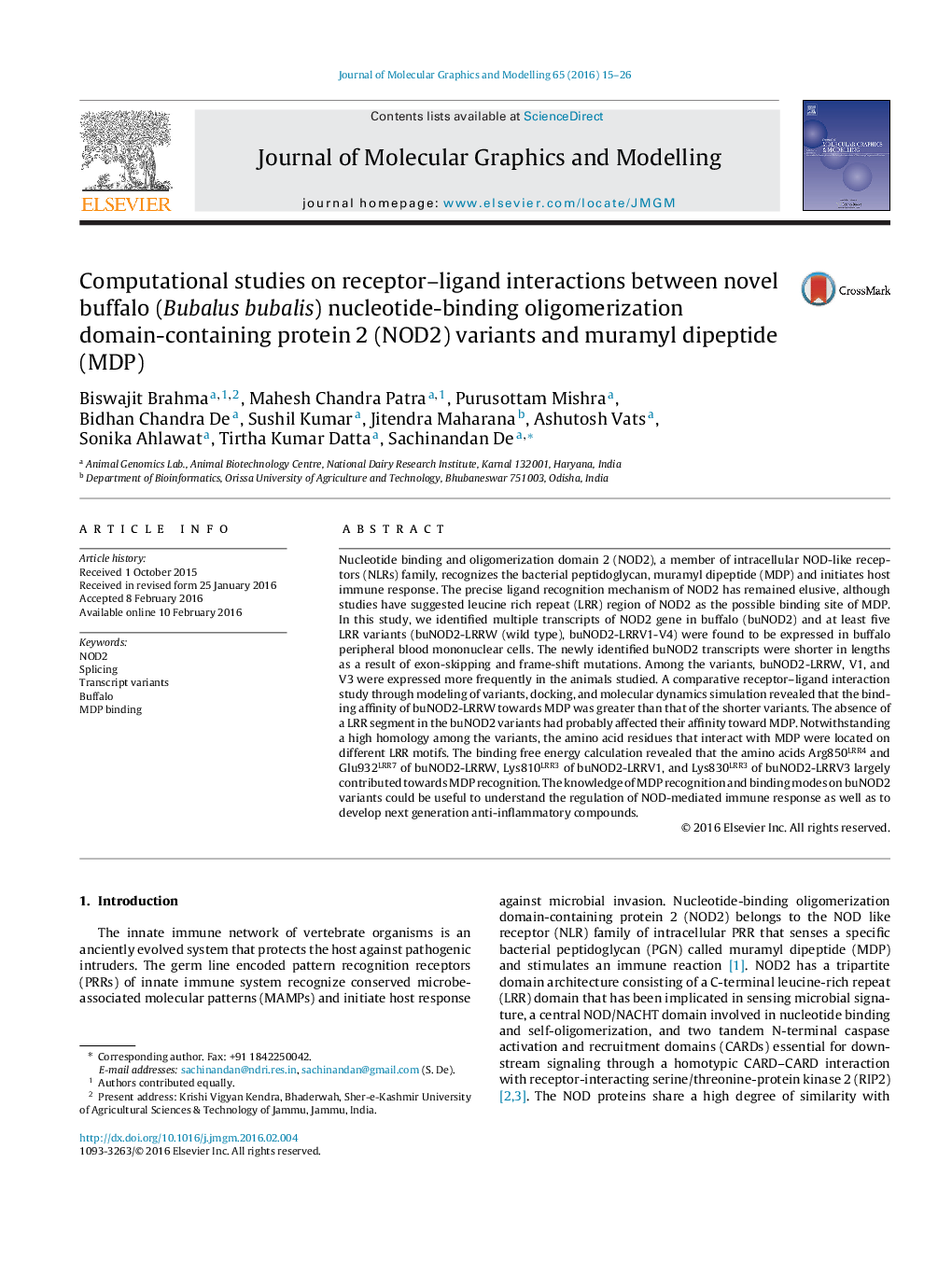| کد مقاله | کد نشریه | سال انتشار | مقاله انگلیسی | نسخه تمام متن |
|---|---|---|---|---|
| 443413 | 692719 | 2016 | 12 صفحه PDF | دانلود رایگان |

• Buffalo expresses multiple transcript variants of NOD2 gene.
• Each variant has different number of LRR motifs.
• MD simulation revealed the wild type buNOD2 binds to MDP more strongly.
• Arg850, Glu932, and Arg992 appeared as potential residues for MDP recognition.
Nucleotide binding and oligomerization domain 2 (NOD2), a member of intracellular NOD-like receptors (NLRs) family, recognizes the bacterial peptidoglycan, muramyl dipeptide (MDP) and initiates host immune response. The precise ligand recognition mechanism of NOD2 has remained elusive, although studies have suggested leucine rich repeat (LRR) region of NOD2 as the possible binding site of MDP. In this study, we identified multiple transcripts of NOD2 gene in buffalo (buNOD2) and at least five LRR variants (buNOD2-LRRW (wild type), buNOD2-LRRV1-V4) were found to be expressed in buffalo peripheral blood mononuclear cells. The newly identified buNOD2 transcripts were shorter in lengths as a result of exon-skipping and frame-shift mutations. Among the variants, buNOD2-LRRW, V1, and V3 were expressed more frequently in the animals studied. A comparative receptor–ligand interaction study through modeling of variants, docking, and molecular dynamics simulation revealed that the binding affinity of buNOD2-LRRW towards MDP was greater than that of the shorter variants. The absence of a LRR segment in the buNOD2 variants had probably affected their affinity toward MDP. Notwithstanding a high homology among the variants, the amino acid residues that interact with MDP were located on different LRR motifs. The binding free energy calculation revealed that the amino acids Arg850LRR4 and Glu932LRR7 of buNOD2-LRRW, Lys810LRR3 of buNOD2-LRRV1, and Lys830LRR3 of buNOD2-LRRV3 largely contributed towards MDP recognition. The knowledge of MDP recognition and binding modes on buNOD2 variants could be useful to understand the regulation of NOD-mediated immune response as well as to develop next generation anti-inflammatory compounds.
Figure optionsDownload high-quality image (257 K)Download as PowerPoint slide
Journal: Journal of Molecular Graphics and Modelling - Volume 65, April 2016, Pages 15–26